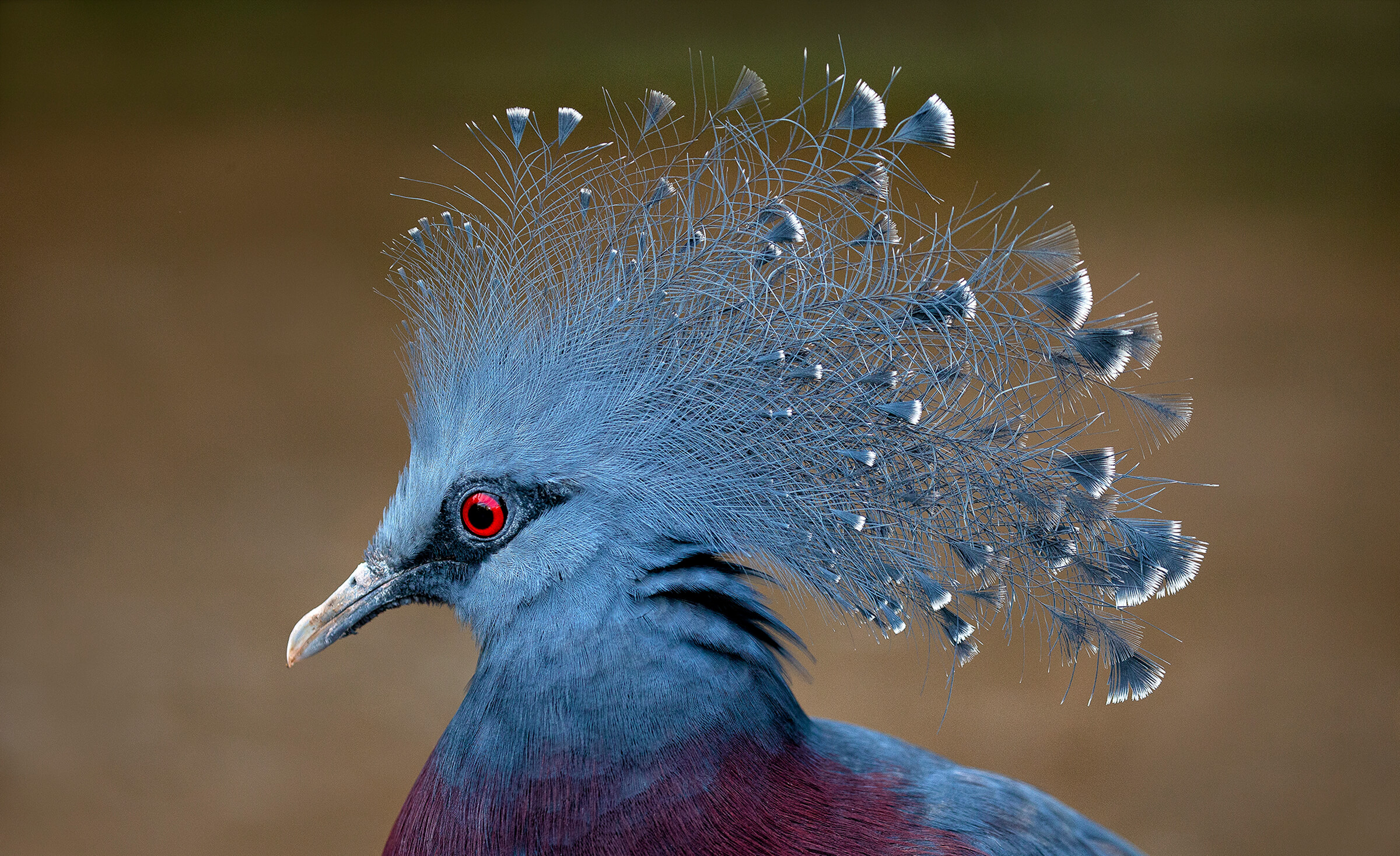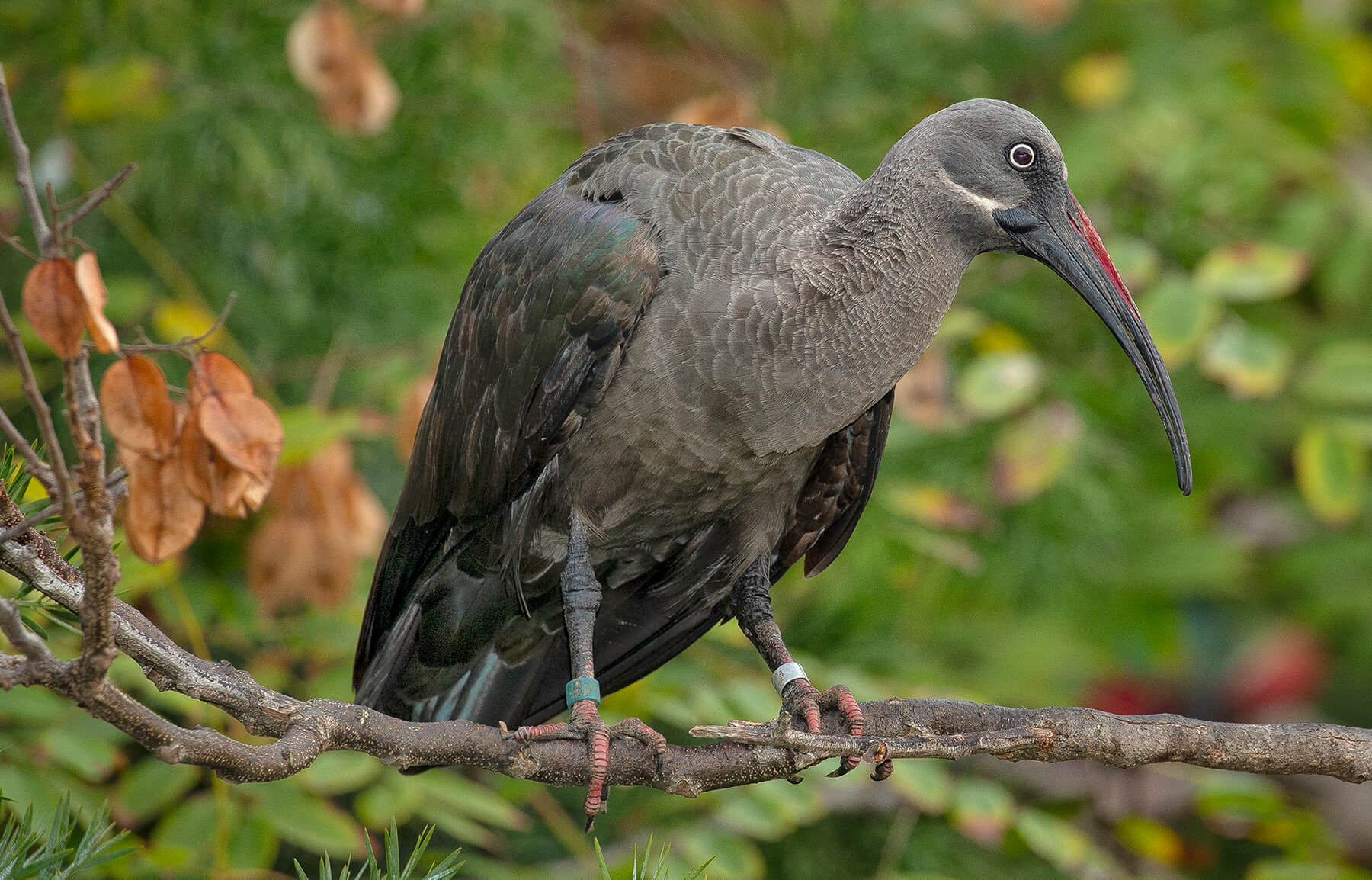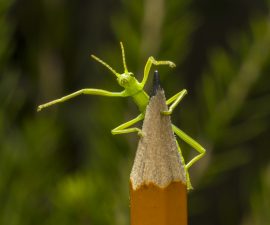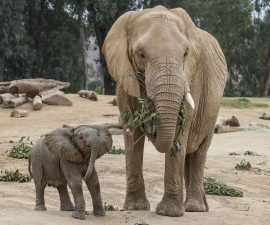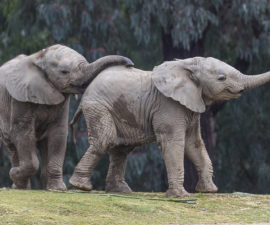"Hidden in plain sight” is a perfect way to describe the San Diego Zoo Safari Park’s Wings of the World aviary—a remarkable walk-through bird habitat that guests might miss, even though it’s only a few feet away from the front entrance.
BY Eston Ellis
Photography by Tammy Spratt
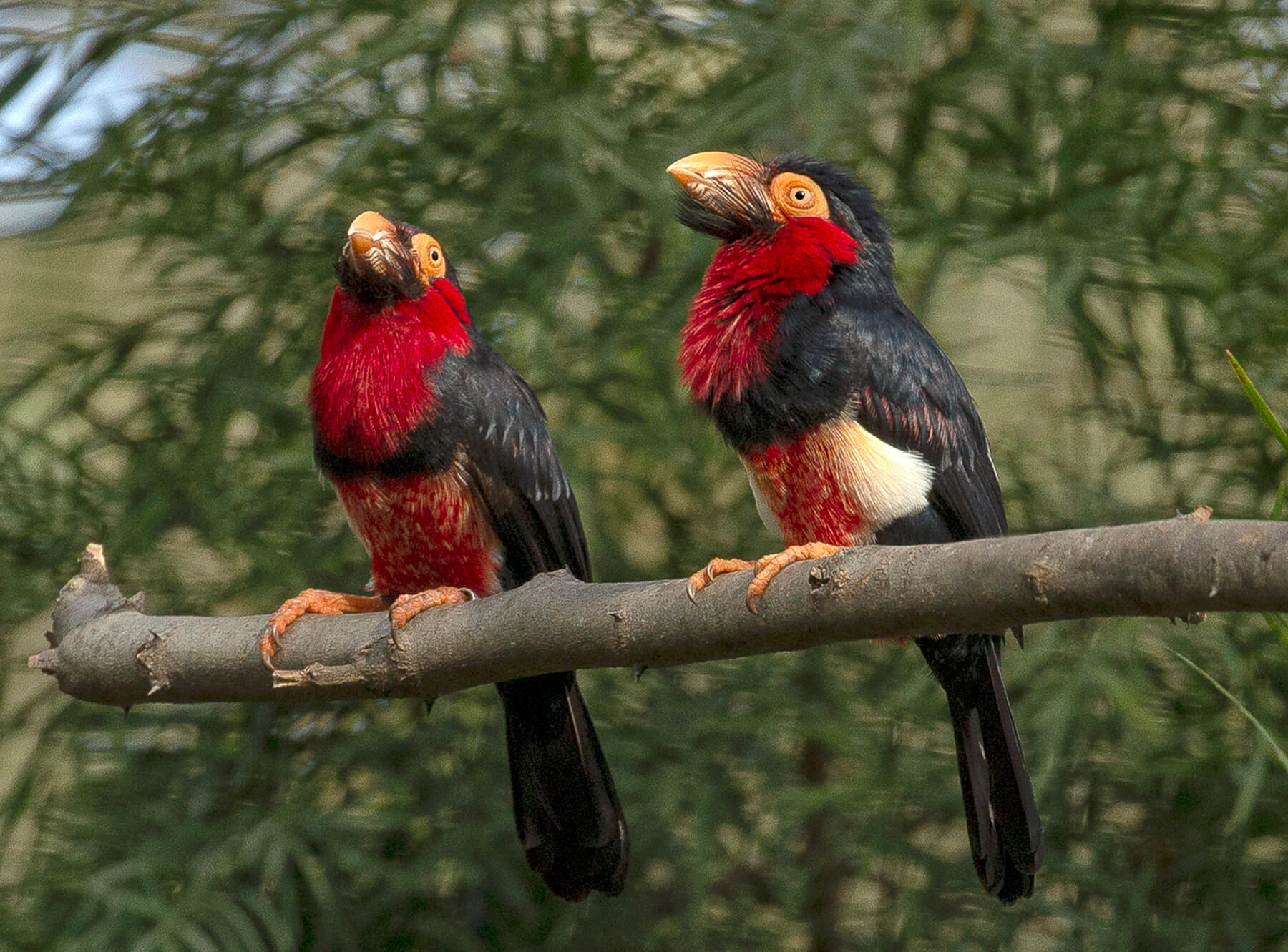
LIVING COLOR
Bearded barbets, which get their name from the beard-like clump of feathers at the base of their bill, and eye-catching Victoria crowned pigeons (at top) are among the many colorful birds that live in the Safari Park’s Wings of the World aviary.
A Plethora of Plumes
While the most-traveled path to Safari Base Camp leads past swans and other feathered friends, the first path to the right after entering the Park leads to the Wings of the World—a peaceful and remarkably colorful world of avian wonder.
Wings of the World is home to more than 25 eye-catching species that are native to Africa, Asia, and South America—many of which are rarely seen. When guests walk through the aviary, some birds come remarkably close—striding, hopping, waddling, or darting within inches of visitors, or flying just overhead.
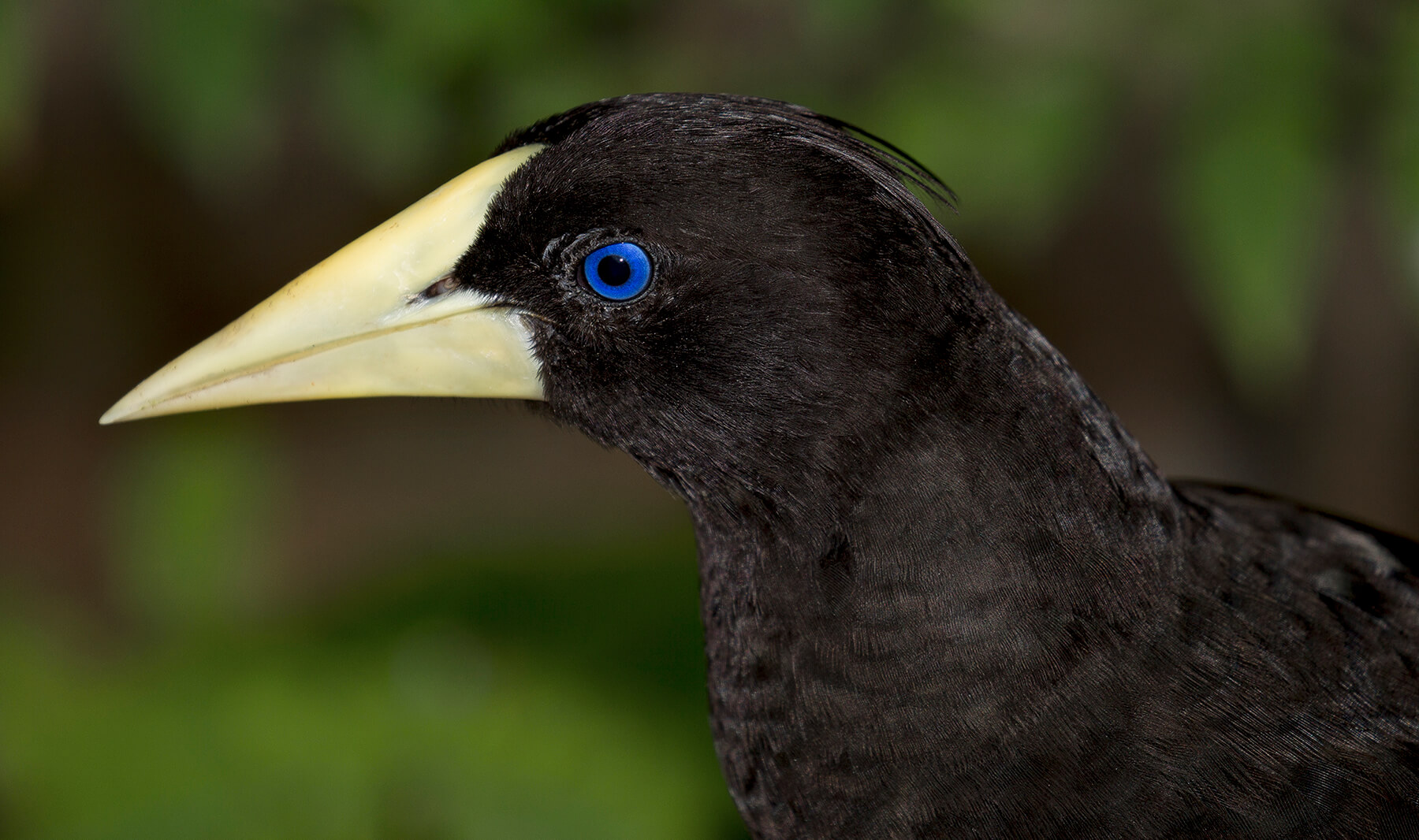
LOOK UP
During breeding season, the Surinam crested oropendola builds an eye-catching, spherical nest that can be up to six feet long.
However, they often simply ignore human visitors entirely as they go about their daily life of nest-building, mating, foraging for their next meal, or exploring the treetops, vegetation, rocks, ponds, and waterfalls in their habitat.
“At the Safari Park, we have birds from all over the world—not only in habitats where guests can see them, but also behind the scenes,” said Andrew Stehly, associate curator of birds at the Safari Park. “We have an amazing facility, the Bird Breeding Center, where we raise more sensitive species, but a lot of our birds do very well in a mixed-species or flock environment, like Wings of the World.”
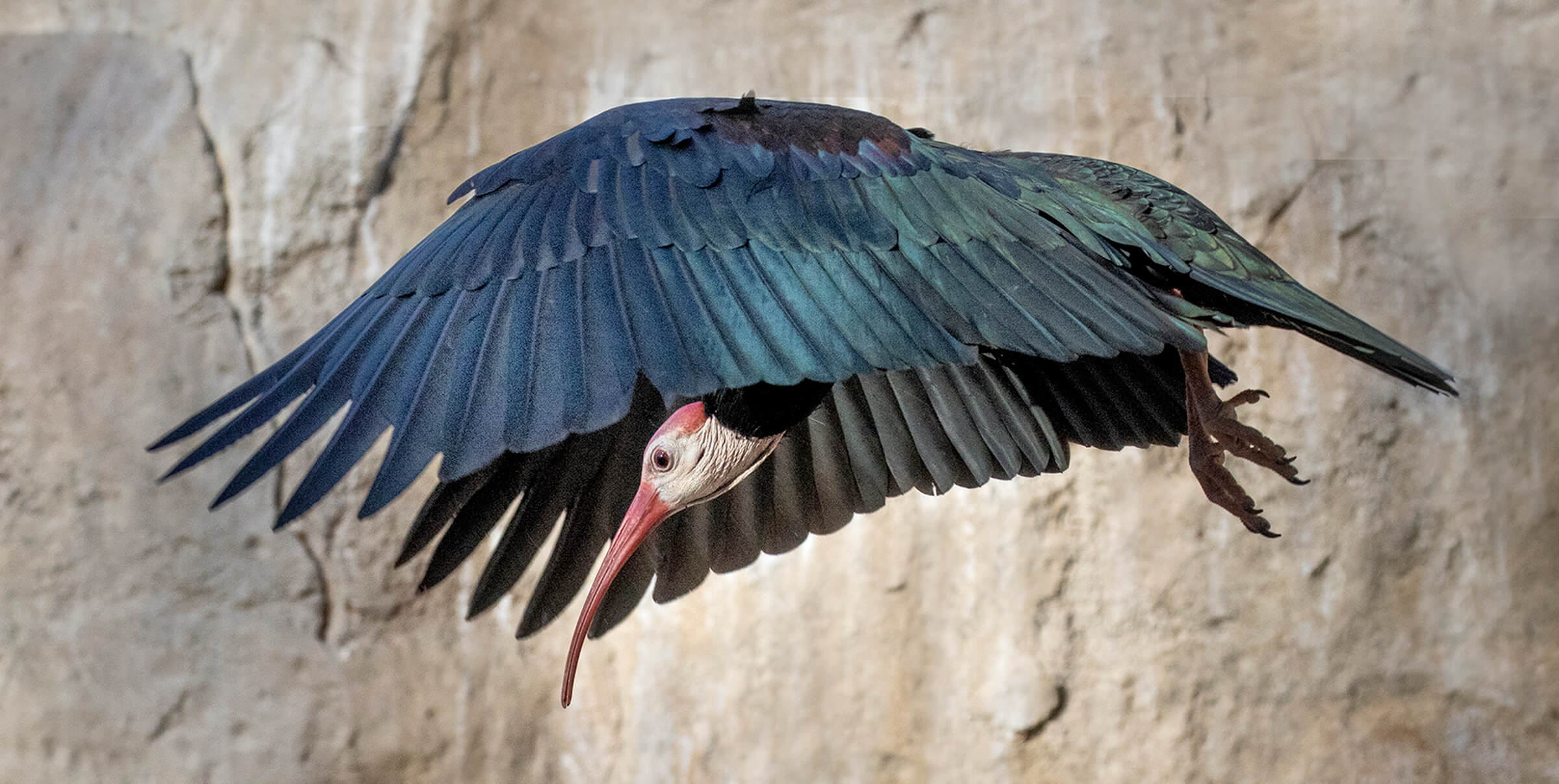
WHY THE LONG BILL?
The long, curved bill of the southern bald ibis is ideal for locating and extracting insects, crustaceans, and other small prey from mud and shallow water.
Behave Naturally
At Wings of the World, a diverse array of species shares a large, protected habitat—and there is truly something here for each one of them. “It offers a couple of waterfalls, several pools, nice trees that provide their own nesting material, and fruit trees, like guavas,” Andrew said. Tall rock outcroppings provide phenomenal vantage points for larger birds like spoonbills, storks, and ibis. At the base of splashing waterfalls there are ponds, marshes, and beaches that offer a variety of options for ducks and shorebirds to explore. Vegetation ranges from grasses and shrubs to midlevel trees and high canopies, providing ideal cover and nesting spots, along with many foraging choices. Flashes of color can be seen moving among the leafy tree branches, and the sounds and songs of birds are everywhere.
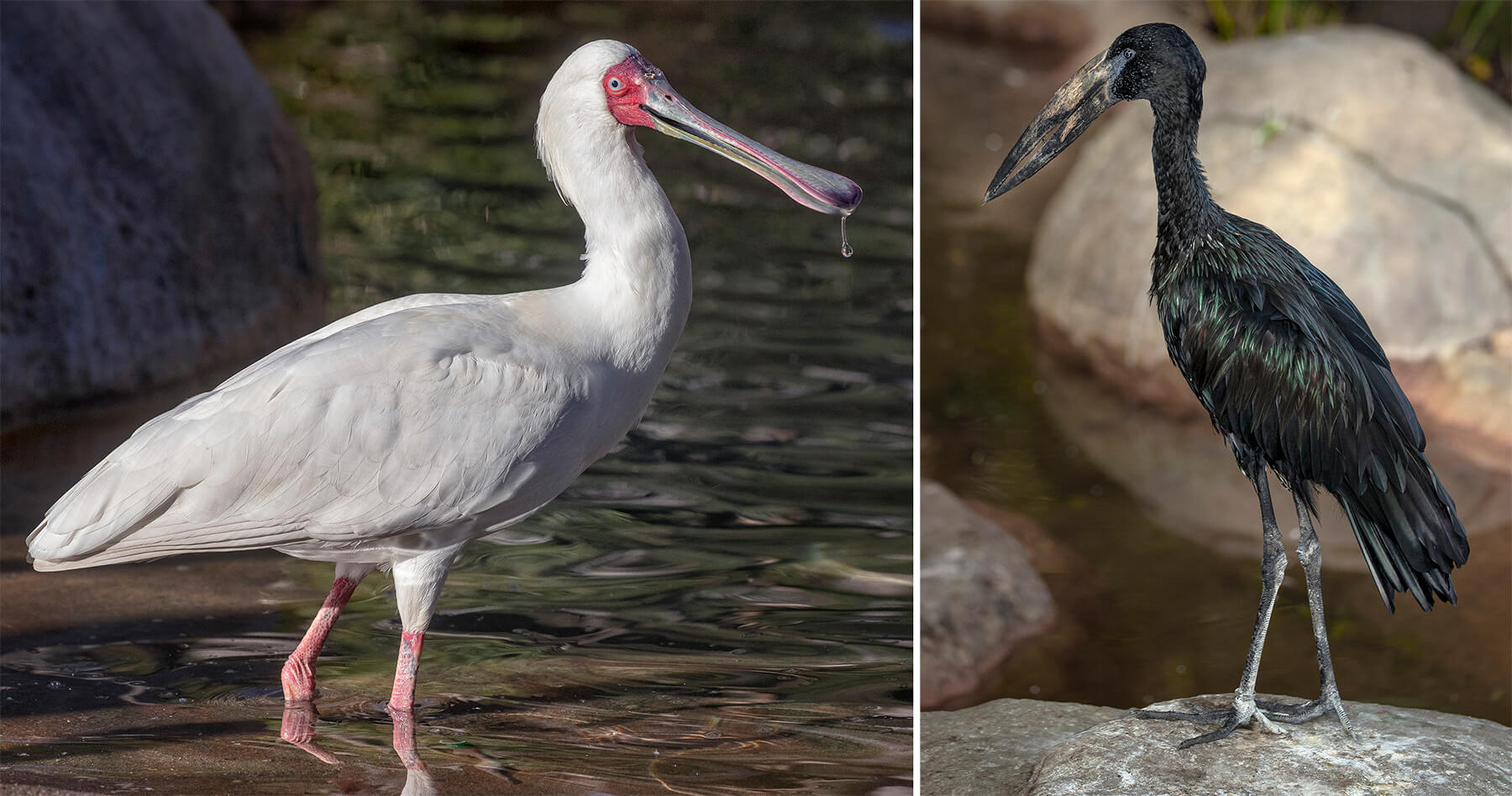
DOES THAT FIT THE BILL?
The African spoonbill, left, has a long, spoon-shaped bill that is ideal for grabbing fish and other small prey in shallow water. The African openbill stork, right, uses its uniquely shaped bill to remove mollusks from their shells.
Every day in this naturalistic habitat, birds use their natural behaviors in surroundings that approximate their native habitats. “The birds in Wings of the World spend their days doing the things they do in wild habitats,” Andrew explained. “For example, during spring, you may see pair bonding and nesting behaviors. There are quite a few storks and ibis, and you may see a lot of competition for nests. Storks and ibis are colonial nesters: they prefer to next close to each other, and the competition strengthens the bond of each pair.”
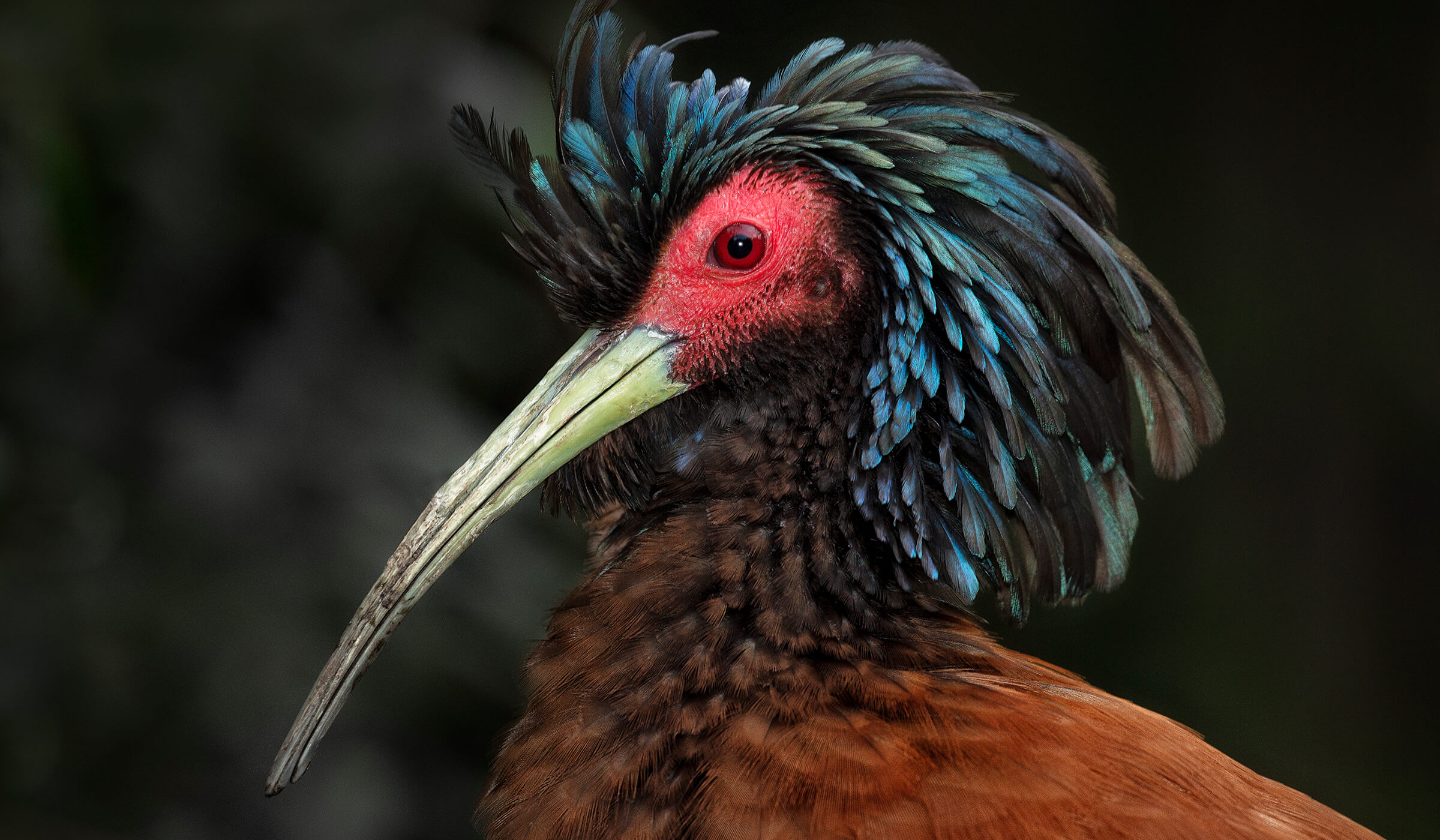
RARELY SEEN
The Safari Park is one of only a few places in North America that are home to the strikingly beautiful Madagascar crested ibis.
Bill Me
The long-legged Abdim’s stork and African openbill stork, multiple species of ibis, and the African spoonbill are the largest birds in this habitat. The African spoonbill is easy to identify by its long, flattened spoon-shaped bill. In contrast, the ibis species have distinctive long, narrow, curved bills that they use to probe into mud in shallow water to find insects, crustaceans, and other small prey.
There’s also the hadada ibis, named for the “ha-da-da” sound of the calls they make, along with the southern bald ibis and the colorful Madagascar crested ibis, categorized as Near Threatened on the International Union for Conservation of Nature Red List of Threatened Species. “The Madagascar crested ibis is a beautiful bird, and we are one of the few zoos that have them,” Andrew said. “Currently we have two males and two females at the Park; one pair is in an off-view area. There are only about 20 Madagascar crested ibis in North America.”
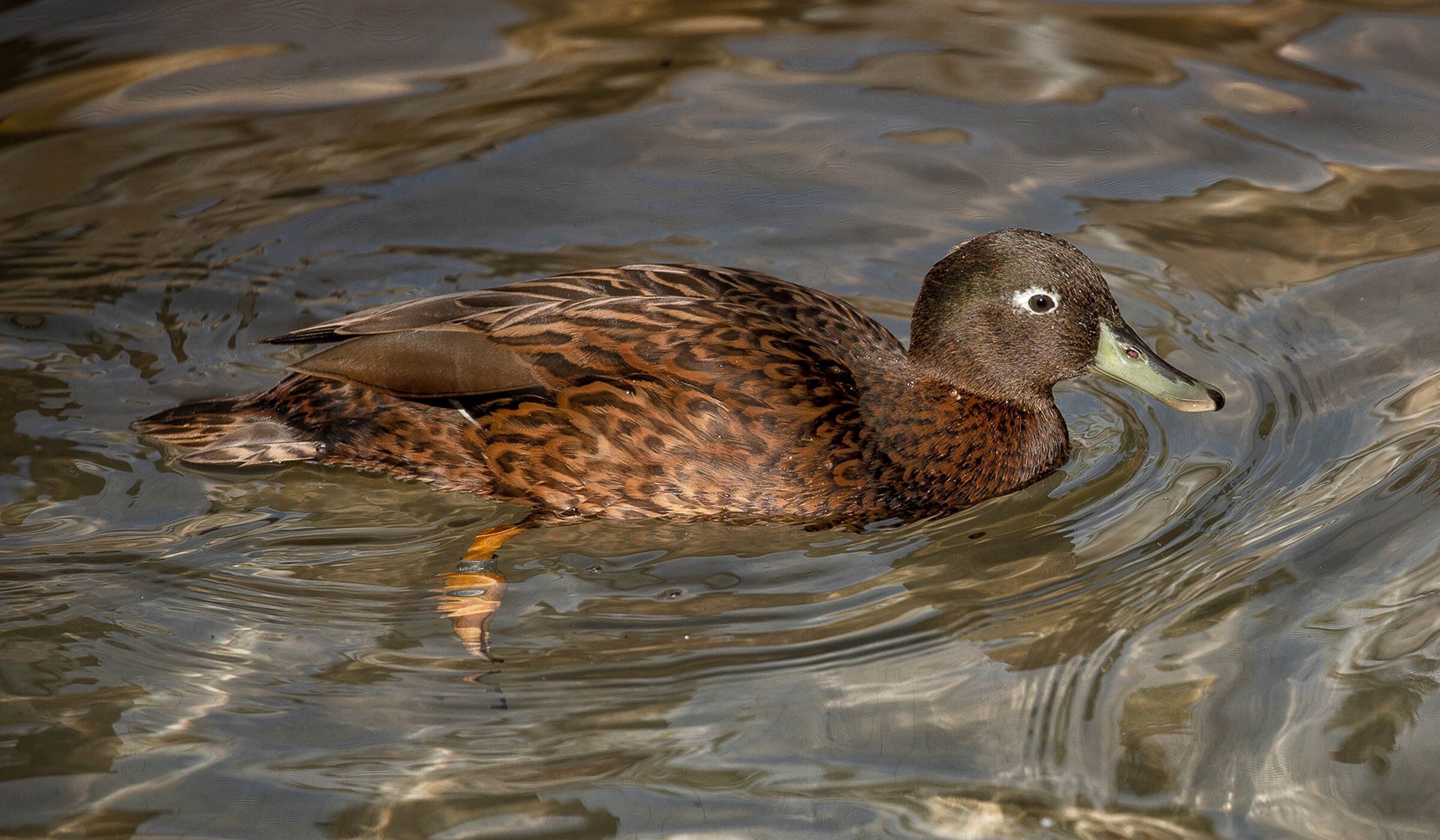
HAWAIIAN NATIVE
The Laysan duck, now found only on Hawaii’s Laysan Island, is considered the rarest native waterfowl species in the US. San Diego Zoo Global has been involved in breeding programs to boost the population of this Critically Endangered species, and several Laysan ducks live in Wings of the World.
Duck, Duck, Oropendola
In and near the water, there are ducks—including several endangered and threatened species—exploring the habitat, including scaly-sided mergansers, Baer’s pochards, falcated ducks, Baikal teals, black-bellied whistling ducks, and Laysan ducks. Up in the trees, there are some unusual nests, including those of the Surinam crested oropendola—spherical dwellings crafted of grasses and palm fiber that can measure three to six feet in length. During breeding season, the male crested oropendola performs an elaborate bowing display to attract a female.
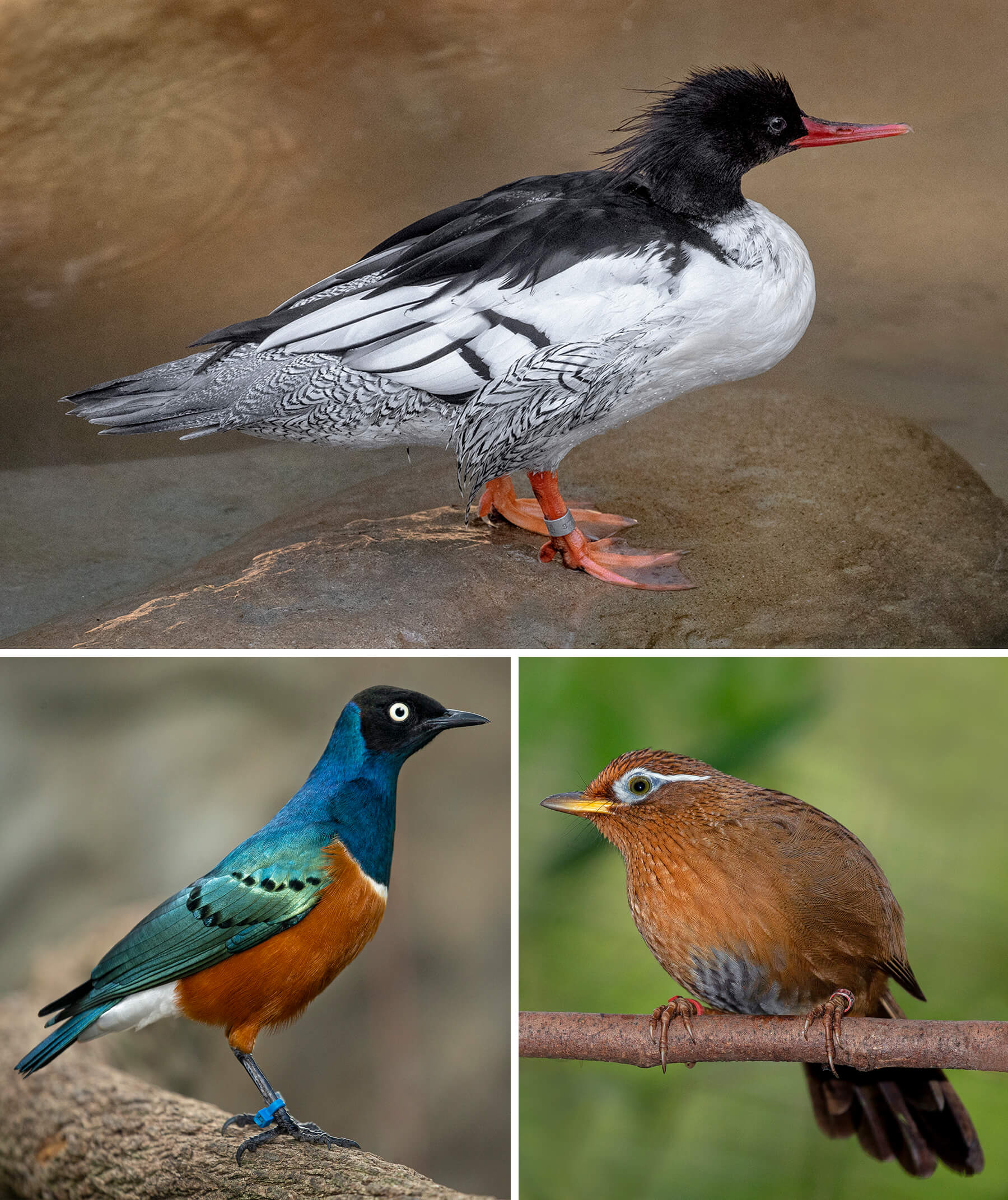
WONDERFUL WORLD OF COLOR
Clockwise, from top, endangered scaly-sided merganser diving ducks, tiny Chinese Hwameis known for eye makeup-like markings and melodious calls, and superb starlings with brilliant metallic-looking plumage are among the remarkable birds that make their home in Wings of the World.
Everywhere throughout this gigantic aviary—in the trees, on the ground, in the air, on the rocks, in the water, or on the shore next to the water—there are many beautiful birds. “One standout, for me, is the family of Victoria crowned pigeons—one of the largest pigeons in the world, with a unique crowned head,” Andrew said. Other colorful species include the superb starling, with its reddish-bronze breast and metallic green and blue accents; the great blue turaco and red-crested turaco; and the tiny Chinese hwamei, known for the distinctive makeup-like markings around its eyes and its melodious calls. “You can hear so many different vocalizations going on in there, from the beautiful song of the Chinese hwamei to the unique calls of white-crested laughing thrushes,” Andrew said. “Good luck trying to spot all of them when you’re in here, but you’ll hear them.”
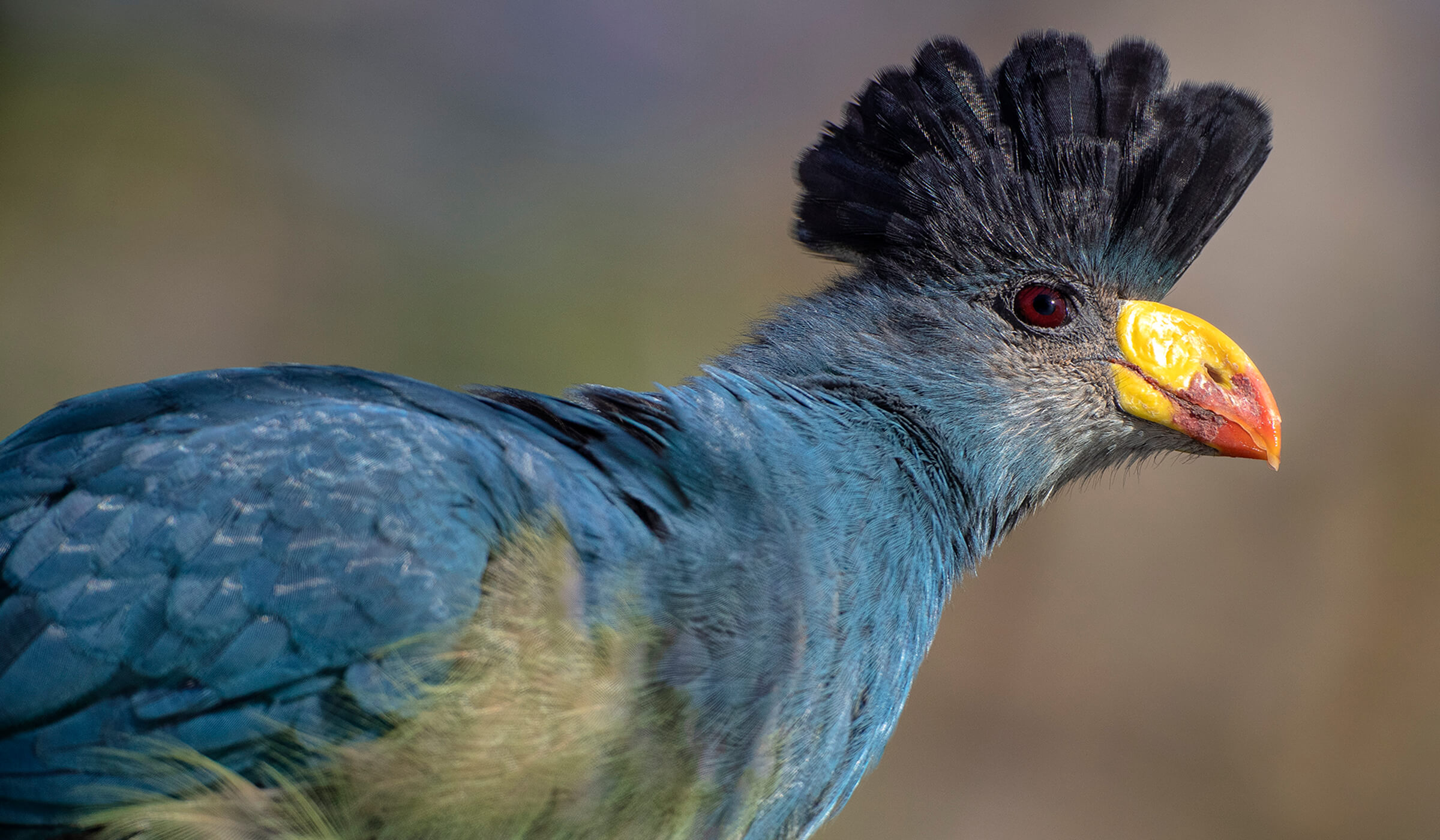
ROYAL BLUE
With its distinctive crest, eye-catching blue and green plumage, yellow and red beak, and extremely loud call, the great blue turaco is impossible to ignore.
The Path Less Traveled
The Wings of the World aviary emerges onto a path adjacent to Plant Trader, the Animal Ambassador Stage, and the flamingo lagoon. It’s the same spot guests reach if they take the path more traveled. “Walking through Wings of the World is a great option, either when you’re just getting into the Safari Park, or when you’re on your way out,” Andrew said. Either way, this one-of-a-kind, walk-through “world” holds wonders you will not want to miss.

